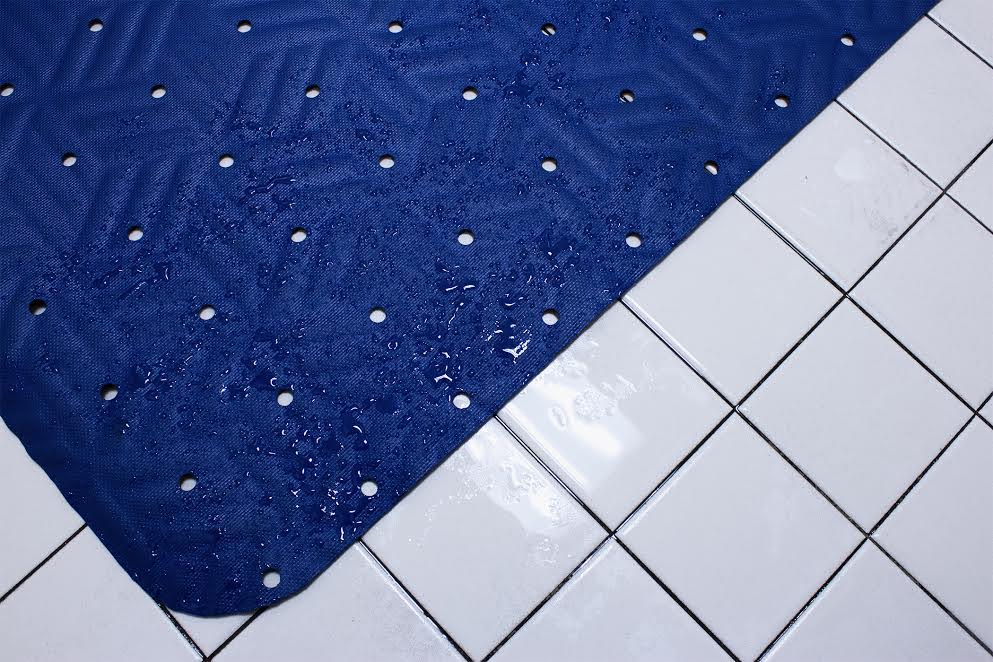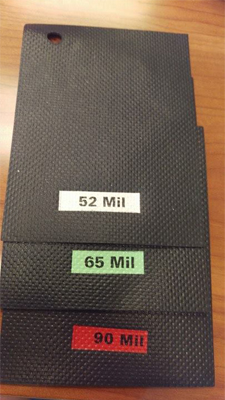Floor Mats for Compliance, Comfort, & Safety
Since its inception in 1992, the Americans with Disabilities Act has made safe accessibility not just a good idea, but federal law. By following ADA standards closely, you greatly increase the amount of safety and comfort in your facility, while maintaining compliance and avoiding penalties.
Today we will look at what to keep in mind, what to avoid, and exactly what you need to know to manage a safe, productive, and compliant office.
Slip Resistance

ADA requirements for Ground & Floor surfaces consider several variables when it comes to safe matting, including:
- Change in level
- Pile heights
- Static coefficient of friction (how slippery or not slippery two surfaces are when in contact with each other)
We hold our versatile mats to the highest slip-resistant standards so that they are in line with friction requirements set forth by:
- ADA
- OSHA
- The Architectural and Transportation Barriers Compliance Board
Finally, our mats go above and beyond in preventing slip and fall accidents by safely collecting the dirt and moisture which create hazards.
Accessibility

While adherence to standards makes a safer workplace for everyone, the main goal of the ADA is accessibility. By properly placing rental mats throughout your facility, you make it easier for employees and visitors to safely navigate your business.
Rely on our service team to keep your mats laundered and properly placed, for safety, compliance, and peace of mind.
Rubber Thickness

As floor mat experts, we always take an extra step for safety and accessibility. The thickness of rubber mats, while not spelled out in the ADA standards, can have an enormous impact on safety. A mat that is too thin will ripple, while a thicker mat lays flat.
By making our rubber mats out of nitrile (never neoprene) and at an appropriate thickness, we know the mat will lay flat to avoid trip and fall injuries.
ADA Standards for Mat Safety
The Americans with Disabilities Act Section 4.5 deals explicitly with Ground & Floor Surfaces. These standards are designed to maximize accessibility and eliminate injuries. And remember, this isn’t just good advice, it’s the law.
Section 4.5.1* General
Ground and floor surfaces along accessible routes and in accessible rooms and spaces, including floors, walks, ramps, stairs, and curb ramps, should be stable, firm, and slip resistant.
Section 4.5.2 Changes in Level
- Changes in level up to 1/4 in (6 mm) may be vertical and without edge treatment.
- Changes in level between 1/4 in and 1/2 inch shall be beveled with a slop no greater than 2:1.
- Changes in level greater than 1/2 in (13 mm) shall be accomplished by means of a ramp.
Section 4.5.3* Carpet
If carpet or carpet tile is used on a ground or floor surface, then it shall be securely attached; have a firm cushion, pad, or backing, or no cushion or pad; and have a level loop, textured loop, level cut pile, or level cut/uncut pile texture. The maximum pile thickness shall be 1/2 inch.
Exposed edges of carpet shall be fastened to floor surfaces and have trim along the entire length of the exposed edge. Carpet edge trim shall comply with 4.5.2.
Non-Compliant Mats to Avoid
Non-compliant mats won’t just fail an inspection, they also put you, your workers, and facility visitors at risk. When it comes to floor mat safety, cutting corners is never a good idea. Avoid these non-compliant and unsafe floor mats.
- Carpet Remnants
- Matting without bevels
- Matting without anti-slip backing
- Rippled mats
- Vinyl backed mats
- Scatter rugs



